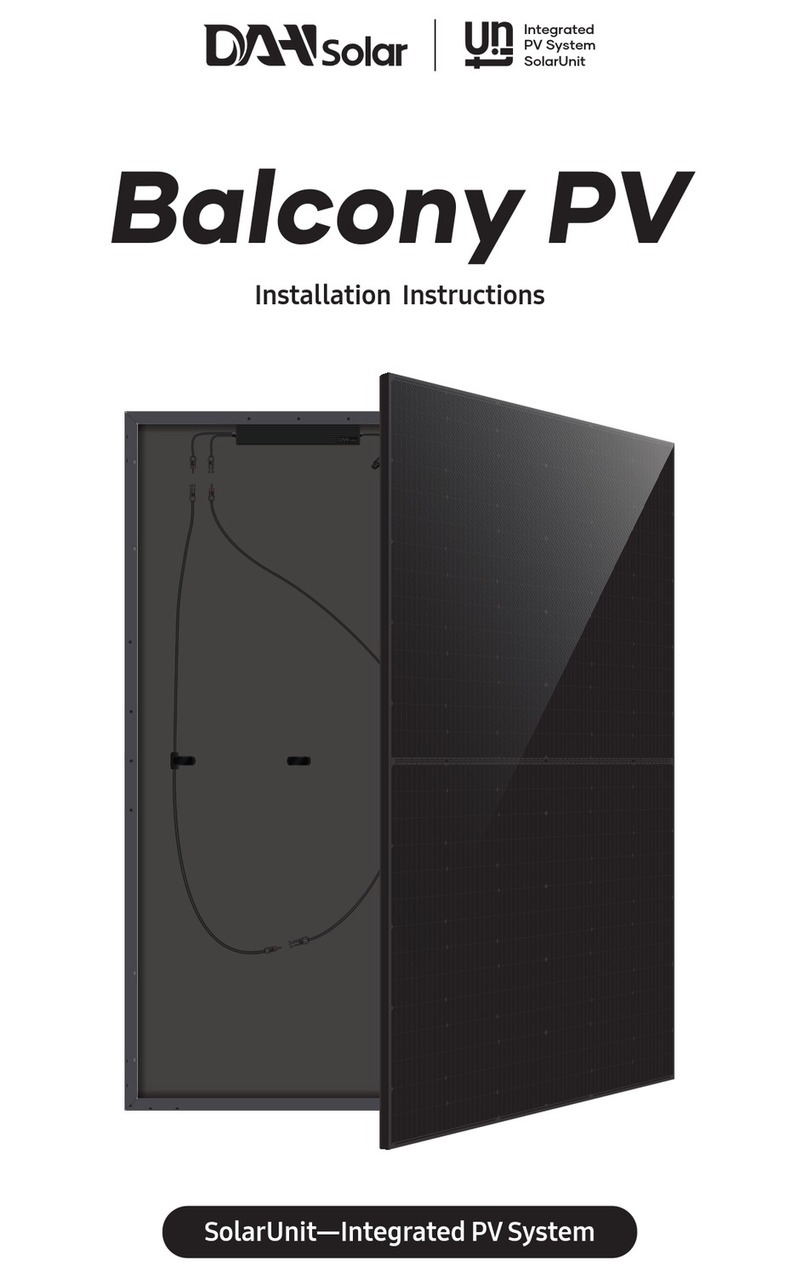
2. Installation / 2.1 Installation Safety
k) Don’t dismantle any components of DAH Solar PV module personally.
l) Please read and well understand all the installation instructions before Installation, connection and maintenance.
m) Don’t li modules by junction box or connecting cables.
n) All the modules system should be connected to ground, if without special stipulations, please refer to International
Electrical Standard or other International Standards.
o) Aer modules delivered to installing site, all the components should be unpacked carefully.
p) Please do not stand, sit, lying on modules, it may damage modules and also have injured risks.
q) Same size and specification models modules can only be connected together.
r) During delivery please make sure transport tools or modules are not subjected to large vibrations,vibrations may
cause modules damage or cells microcrack inside of modules.
s) During all the delivery, don not allow modules to fall onto ground from transport tools, house or hand, this will
damage modules or cells inside.
t) Do not wipe the module with corrosive chemicals.
u) When loads are working,please do not disconnect the modules.
Please wear protective headcoats, insulated gloves, and rubber insulated shoes during installation job.
Keep the PV module packed until installation.
To avoid unnecessary touching of the PV module during installation. The surface of modules may over heated, it has risk
of burnt and electric shock.
Do not install in raining, snowing or windy weather conditions.
Due to the risk of electric shock, please do not proceed the installation work if junction box was wet.
Use insulated and dry tools, do not use wet tools.
Do not throw any objects during installation (such as PV module or tools).
Make sure that combustible gasses are not generated or present near the installation site.
Correctly connect the male and female connectors , inspect the wiring status, all the cables must not be separated from
the PV module.
Do not touch junction box and the end of the connectors(male and female) with bare hands during installation or under
sunlight, regardless of whether the PV module is connected to or disconnect from the system.
Do not expose the PV module to excessive loads on the surface of the PV module.
Do not strike or put excessive loads on the glass or back sheet, this may break the cells or cause micro crack.
Do not use sharp tools to wipe the glass of PV module. It would leave scratches on the module.
Do not drill holes on the frame of PV module.
For BIPV (building integrated photovoltaics) or rooop mounting structure installation, please try to follow the“from top
to bottom” and/or “from le to right” principle, and do not step on the module, that will damage the module and would be
dangerous for personal safety.
05/06
PV MODULE INSTALLATION MANUAL




























